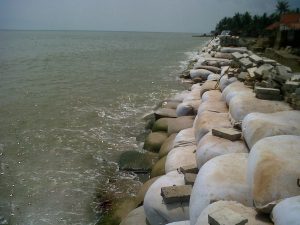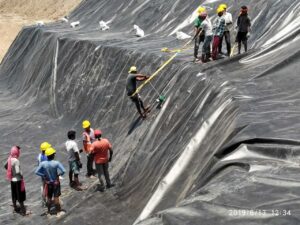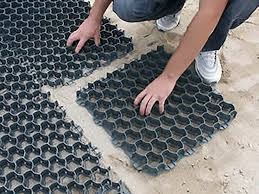Flood Protection Project at Ranchi, Jharkhand – Case Study
Erosion along the rivers in Ranchi results in the loss of both infrastructure and land, driving many people living along the riverbanks into poverty. Because hard materials typically used to safeguard riverbanks, such as rock, are in short supply, geotextile sand-filled bags (geobags) has been developed as a cost-effective solution to this deadly problem. Geobags have been employed to produce revetments that have begun to methodically stabilize huge stretches of the Brahmaputra river system over the last two decades.
Endogenetic, exogenetic, and anthropogenetic causes are responsible for the geoenvironmental characteristics of the Peninsular drainage basins in India’s Jharkhand state. In terms of geomorphic history, the Peninsular landmass is the oldest. The continent has been undergoing episodes of aggradation and deterioration. Man-made mechanisms have recently become the dominant mechanisms in affecting the surface morphology of drainage basins. Weathering, mass movement, and erosion all have a part in weakening the landmass of such basins, resulting in environmental degradation in the basin landscape.
Solution
Geobags are geotextile containers filled with sand and weighing less than 1500 kg. Geobags are used to form lengthy guiding revetments along sand-bed rivers, with the benefit of operating as a filter layer as well as a scour and erosion protection aspect. In sand-bed rivers, geobags have been demonstrated to be an effective treatment for riverbank erosion. The geobag revetments’ performance can be attributed to several of the bags’ unique characteristics, such as their resistance to winnowing in the self-launching, underwater apron due to their flexible and porous nature.
Flood-control strategies, both traditional and modern, have large costs, making their deployment difficult. Geo bags are an excellent alternative to such costly procedures. Many geobags manufacturers in India, such as Ocean Global, produce high-quality geobags that can be used to construct sandbag walls to divert floodwater or slow its flow. These sand-filled geo bag walls are not only more cost-effective to construct, but also considerably more convenient to do so without causing any damage to existing structures or buildings. These low-cost, simple-to-assemble walls can also be utilized in rainwater collection systems, which can be beneficial in drought-prone areas.
Geo bags are particularly important in the construction of ports, dams, harbors, and other water-related structures because they give a robust, resilient, long-lasting, and sturdy resistance to strong water flow. One of the most important aspects of not only erecting these structures on and near water bodies but also preventing the waterbodies from flooding the routes of these structures, is resistance. In areas where the water current is stronger, geo bags can also be utilized to provide further protection and strength to the dock foundation.
The Construction Process
Geobags have been widely employed for coastal protection around the world, and various research has examined how geobags operate in a coastal environment. The hydraulic loads imposed on geobags used for coastal operations, on the other hand, differ from those imposed in an open channel flow. In coastal situations, wave loading is dominant, whereas current loading is the predominant source of hydraulic forces for riverbank protection geobags. The resistance of geobags against the current attack and the need for more experimental data for final design recommendations and recommended stability coefficient for geobags based on applied engineering judgment.
With large-scale geobag applications, such as those on India’s and Bangladesh’s Brahmaputra Rivers, it’s critical to understand how the river flow and the bags interact and to optimize bag sizing to prevent incipient motion. Local scour could develop if the various pieces that make up the revetment fail, causing structural failures.
The Government of Jharkhand decided to reconstruct the surrounding areas of the river to prevent the areas from floods. The main purpose was to provide a permanent and flexible solution that can easily withstand the rapid flow fluctuations and can counter the flooding of nearby areas in high flood conditions. Collaborating with Ocean Global was of utmost importance and with the help of 300000 Bags the flood protection project was completed with success.
Since the introduction of geo bags, the product has proven to be a game-changer in terms of preventing riverbank erosion and protecting beaches, as well as providing effective flood protection. Geo bags are filled with sand and/or soil and are composed of woven polyester and polypropylene fabrics. Typically, geo bags are used to construct shore-protection structures.
Geo bags have proven to be effective in preventing soil erosion. They’ve shown to be more effective than standard riverside soil arresting approaches. Geo bags have been shown in studies to assist wild animals in the forest in gaining access to water without slipping into bodies of water. Furthermore, properly avoiding soil erosion leads to greater soil retention and agricultural productivity in the surrounding areas.



